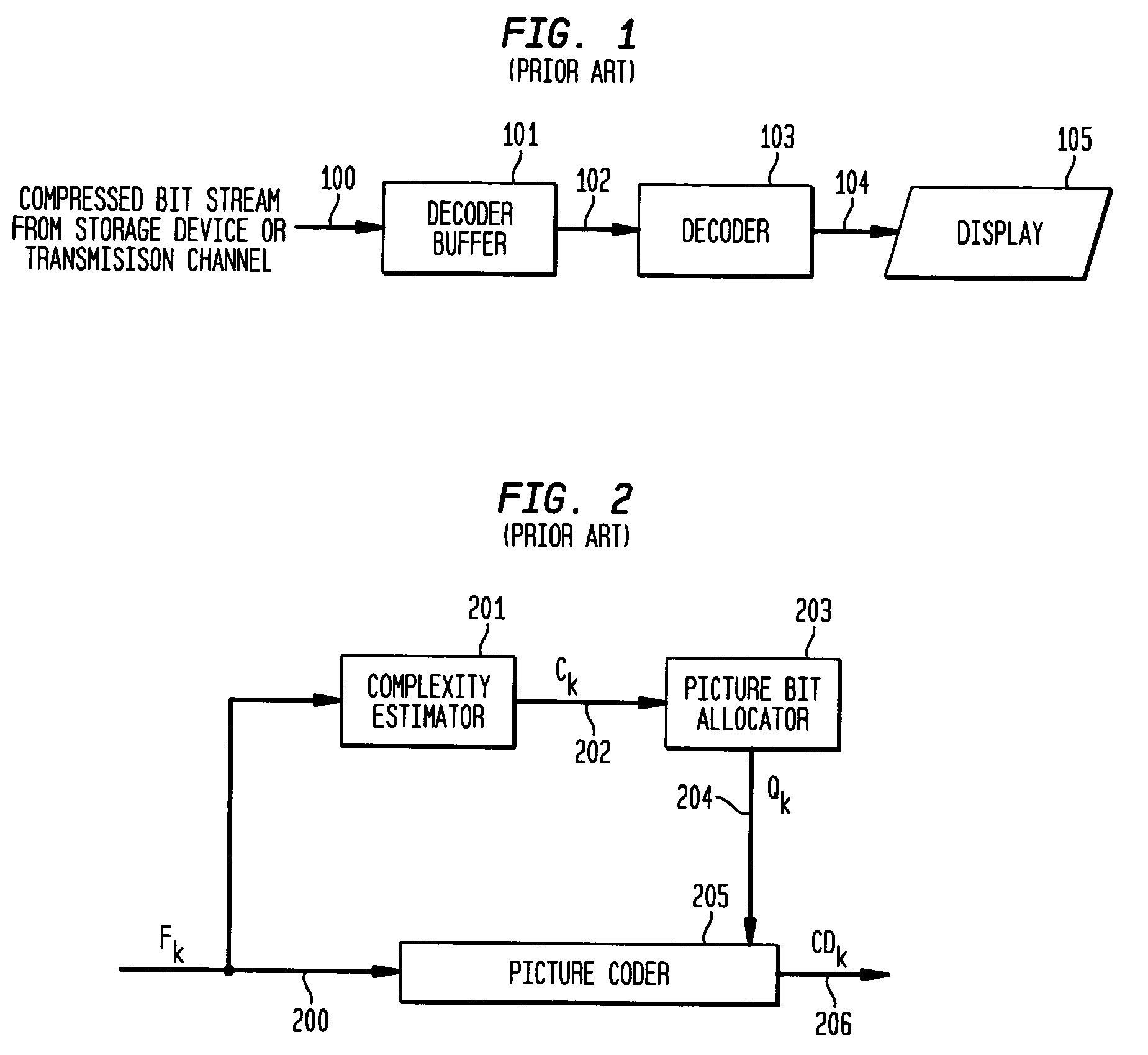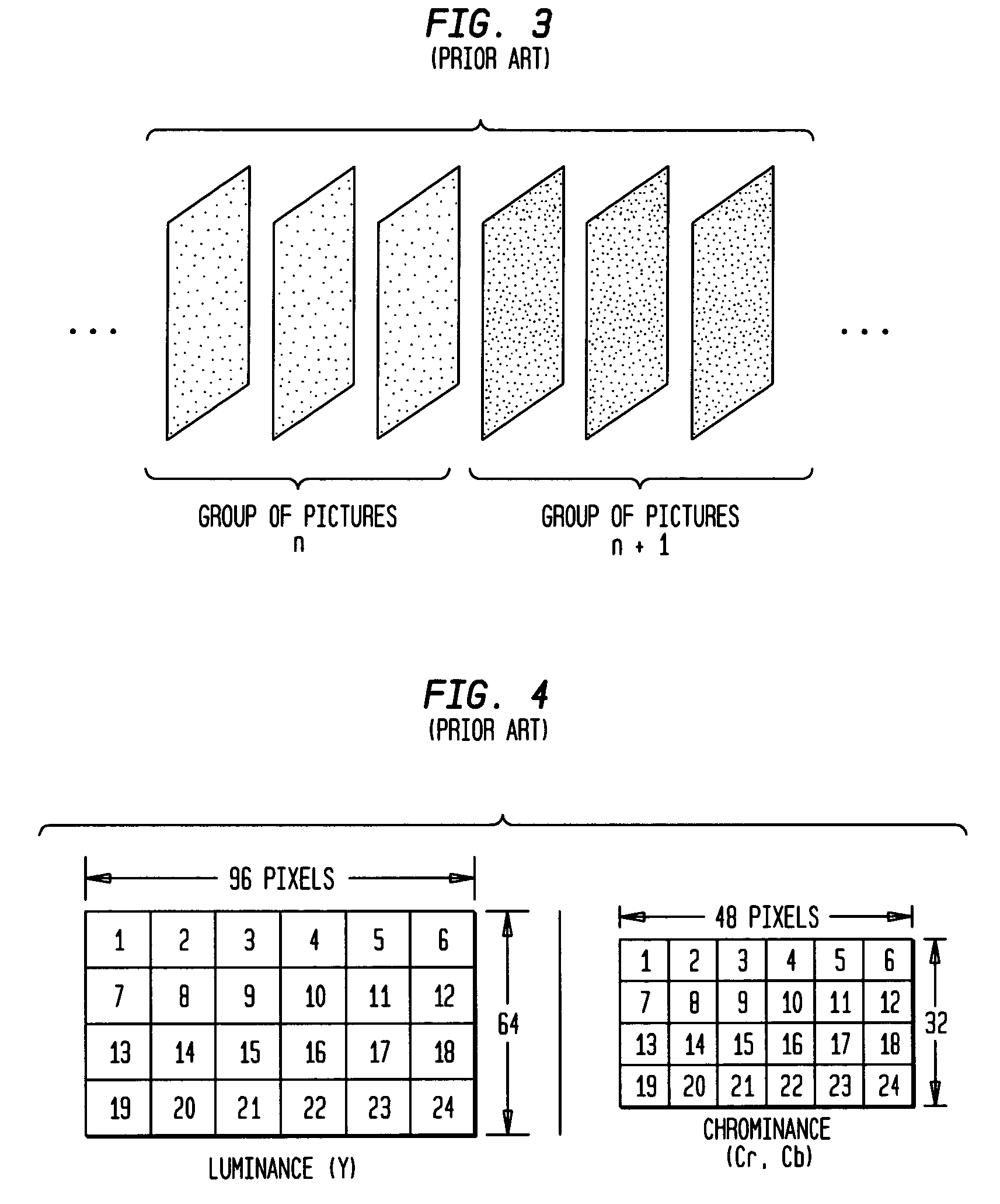Method for video transcoding with adaptive frame rate control
a frame rate control and adaptive technology, applied in the field of transcoders, can solve the problems of reducing the complexity of the t1 transcoder, and reducing the novelty of the encoder algorithm, so as to achieve good temporal-spatial quality trade-off
- Summary
- Abstract
- Description
- Claims
- Application Information
AI Technical Summary
Benefits of technology
Problems solved by technology
Method used
Image
Examples
Embodiment Construction
Spatial Resolution and Motion Vector Down-Sampling Processes in Transcoding
Without loss of generality, consider the case of spatial resolution down-sampling shown broadly in FIG. 10 where the input is MPEG-2 video with a higher spatial resolution, (e.g. CIF (Common Intermediate Format) resolution 352×288, 4 CIF resolution 704×576, or 4 SIF (Source Input Format) resolution 720×480) while the output is MPEG-4 video with a lower resolution (e.g. CIF resolution 352×288 or QCIF (Quarter CIF) resolution 176×144). Hence, the MPEG-2 frame picture has to be down-sampled to fit the MPEG-4 image size, which is a typical case. The T2 transcoder is adopted so that the resolution down-sampling can be processed in the pixel domain. As shown in FIG. 4, the MPEG-2 video is down-sampled with 2:1 ratio in both vertical and horizontal directions so that the QCIF MPEG-4 frame image can be obtained.
FIG. 11(a) is a block diagram of a preferred embodiment of a transcoder pursuant to the present inventi...
PUM
 Login to View More
Login to View More Abstract
Description
Claims
Application Information
 Login to View More
Login to View More - R&D
- Intellectual Property
- Life Sciences
- Materials
- Tech Scout
- Unparalleled Data Quality
- Higher Quality Content
- 60% Fewer Hallucinations
Browse by: Latest US Patents, China's latest patents, Technical Efficacy Thesaurus, Application Domain, Technology Topic, Popular Technical Reports.
© 2025 PatSnap. All rights reserved.Legal|Privacy policy|Modern Slavery Act Transparency Statement|Sitemap|About US| Contact US: help@patsnap.com



